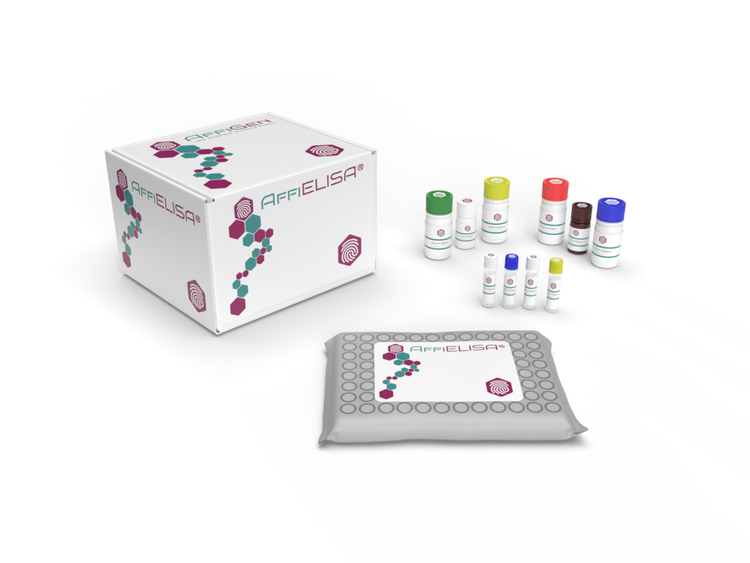The Human IL-1 beta ELISA Kit is a powerful tool for accurately measuring levels of interleukin-1 beta (IL-1 beta) in human samples. This technical article provides an in-depth exploration of the kit, including its components, principles, and applications. Additionally, a comprehensive lab protocol is included to guide researchers in obtaining reliable and reproducible results.
Principles of the Human IL-1 beta ELISA Kit: The Human IL-1 beta ELISA Kit utilizes a sandwich enzyme-linked immunosorbent assay (ELISA) technique. The kit includes specific antibodies that recognize and bind to IL-1 beta, allowing for its detection and quantification. This approach ensures high sensitivity, specificity, and accuracy in measuring IL-1 beta levels.
Components and Storage: The Human IL-1 beta ELISA Kit typically contains pre-coated microplate strips, standard solutions, detection antibodies, enzyme conjugate, substrate solution, stop solution, wash buffer, and a detailed user manual. Proper storage and handling of these components are crucial to maintain their stability and effectiveness.
Lab Protocol: The article presents a step-by-step lab protocol for using the Human IL-1 beta ELISA Kit. It covers sample preparation, plate setup, antibody incubation, washing steps, substrate addition, and measurement using a microplate reader. Adhering to the recommended protocol is essential to ensure accurate and reliable results.
Applications and Significance: The accurate measurement of IL-1 beta levels is vital for understanding the inflammatory response, immune system modulation, and various disease processes in humans. The Human IL-1 beta ELISA Kit offers researchers a valuable tool for investigating these areas, contributing to advancements in immunology, inflammatory disorders, and therapeutic development.
Choose from our high sensitivity AffiELISA kits:
AffiELISA® Zebrafish IL1b Kit: Ultra-High Interleukin 1 Beta ELISA Detection
AffiELISA® Simian IL1b Kit: Ultra-High Interleukin 1 Beta ELISA Detection
AffiELISA® Sheep IL1b Kit: Ultra-High Interleukin 1 Beta ELISA Detection
AffiELISA® Rat IL1b Kit: High Sensitivity Interleukin 1 Beta ELISA Detection
AffiELISA® Rabbit IL1b Kit: High Sensitivity Interleukin 1 Beta ELISA Detection
AffiELISA® Pig IL1b Kit: High Sensitivity Interleukin 1 Beta ELISA Detection
AffiELISA® Mouse IL1b Kit: High Sensitivity Interleukin 1 Beta ELISA Detection
AffiELISA® Human IL1b Kit: High Sensitivity Interleukin 1 Beta ELISA Detection
AffiELISA® Horse IL1b Kit: High-Resolution Interleukin 1 Beta ELISA Detection
AffiELISA® Dog IL1b Kit: High Sensitivity Interleukin 1 Beta ELISA Detection
AffiELISA® Chicken IL1b Kit: High Sensitivity Interleukin 1 Beta ELISA Detection
AffiELISA® Cattle IL1b Kit: High-Resolution Interleukin 1 Beta ELISA Detection
AffiELISA® Guinea pig IL1b Kit: High Sensitivity Interleukin 1 Beta ELISA Detection
AffiELISA® Rat pro interleukin 1 beta Kit: Ultra-High pro-IL1b ELISA Detection
The Human IL-1 beta ELISA Kit provides a robust and precise method for quantifying IL-1 beta levels in human samples. By following the detailed lab protocol and utilizing this kit, researchers can enhance their understanding of the role of IL-1 beta in various biological processes and diseases. Trust in the reliability and accuracy of the Human IL-1 beta ELISA Kit to facilitate impactful discoveries in the field of immunology and inflammation research.
1. Sample Preparation:
- Collect human samples (serum, plasma, cell culture supernatant, etc.) and transfer them to clean tubes.
- Centrifuge the samples at a suitable speed and duration to remove any debris or particles.
- Transfer the clarified supernatant to new tubes and store on ice until ready for analysis.
2. Kit Preparation:
- Allow the kit components to reach room temperature (RT) before use.
- Prepare the necessary reagents, including the standard solutions and working dilutions of the detection antibody and enzyme conjugate as specified in the kit's user manual.
- Dilute the samples if necessary according to the recommended range provided in the manual.
3. Plate Setup:
- Remove the desired number of coated microplate strips from the kit, leaving the remaining strips in the provided resealable bag with desiccant to maintain their integrity.
- Label the plate wells according to the sample and standard identification.
- Add the diluted samples, standards, and appropriate controls to the designated wells in duplicate or triplicate, following the plate layout provided in the manual.
- Cover the plate with an adhesive strip and gently shake or tap the plate to ensure thorough mixing.
4. Antibody Incubation:
- Incubate the plate at a suitable temperature and duration, typically at RT or 37°C, as specified in the manual.
- Add the detection antibody to each well and gently mix.
- Incubate the plate while protected from light, allowing the antibody to bind to the captured IL-1 beta.
5. Washing:
- Carefully remove the adhesive strip from the plate.
- Wash the plate wells thoroughly with the provided wash buffer, following the recommended number of wash cycles and duration specified in the manual.
- Completely remove the wash buffer from the wells by gently tapping the plate upside down on a clean absorbent material.
6. Substrate Addition and Measurement:
- Add the enzyme conjugate to each well and gently mix.
- Incubate the plate again while protected from light, allowing the conjugate to bind to the IL-1 beta-antibody complex.
- Add the substrate solution to each well and incubate for a suitable duration to allow color development.
- Stop the reaction by adding the stop solution to each well.
- Measure the absorbance of each well using a microplate reader at the appropriate wavelength specified in the manual.
7. Data Analysis:
- Use the absorbance values obtained from the standard curve to calculate the IL-1 beta concentrations in the samples, following the instructions provided in the manual.
- Analyze the data statistically using appropriate software or methods.
This general protocol provides a broad overview of the steps involved in using the Human IL-1 beta ELISA Kit. It is crucial to consult the specific instructions and recommendations provided by the manufacturer to ensure accurate and reliable results.

